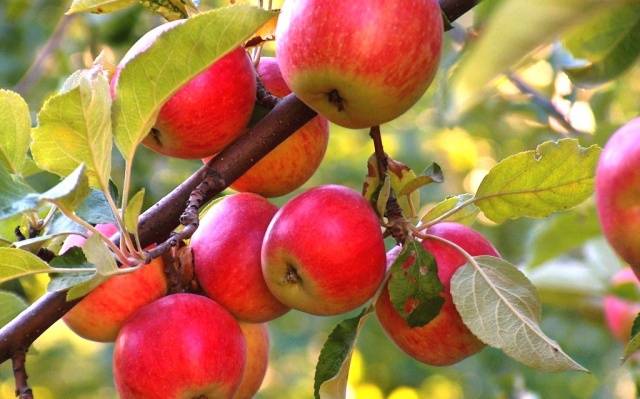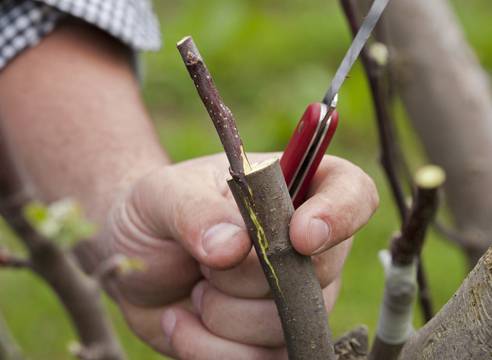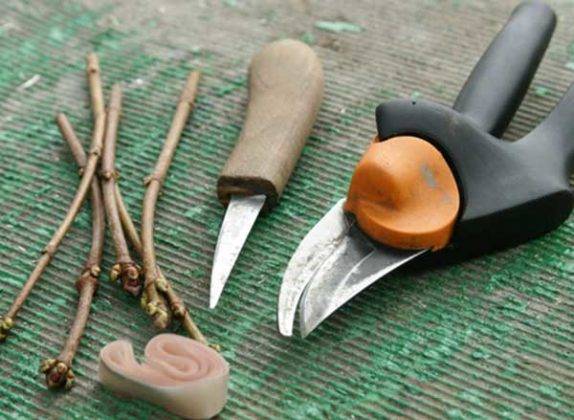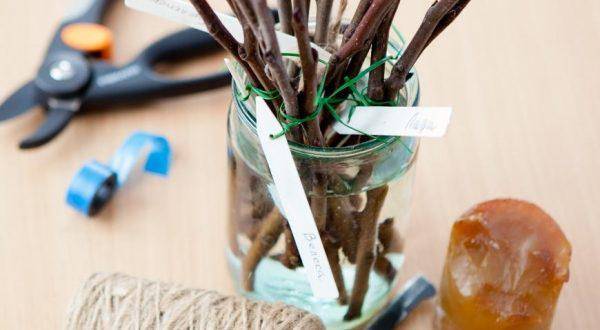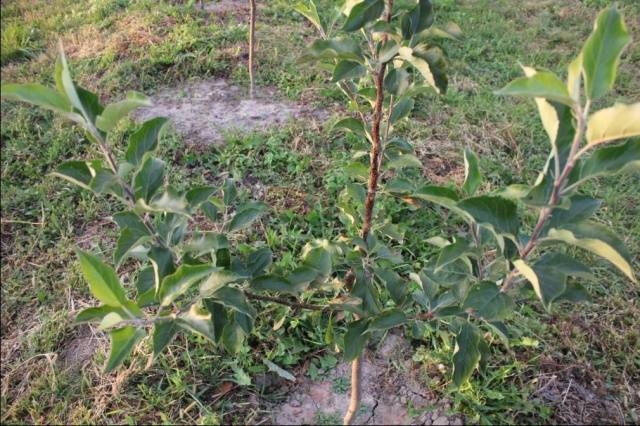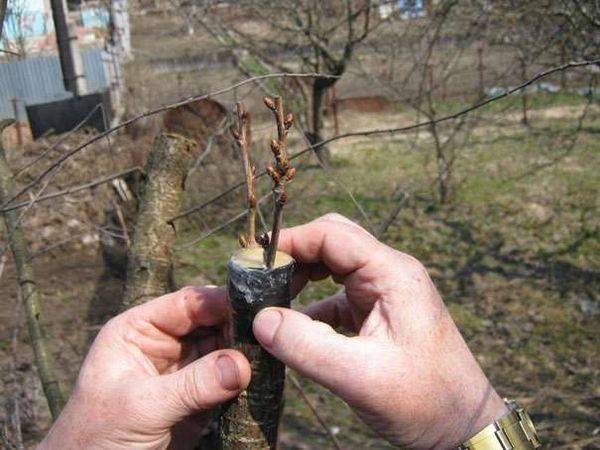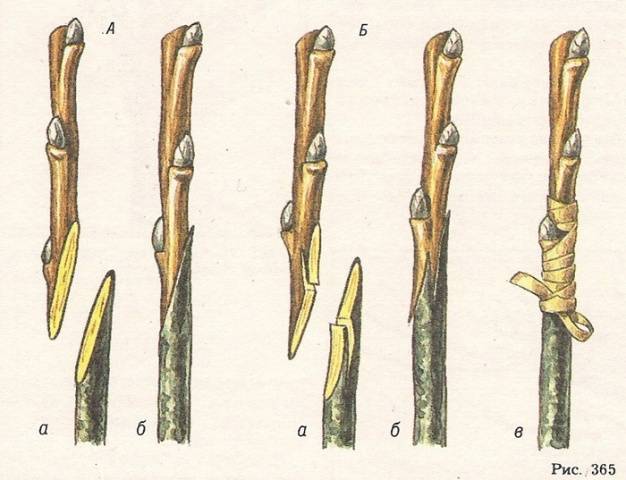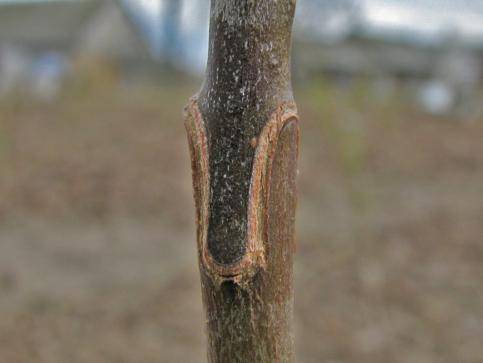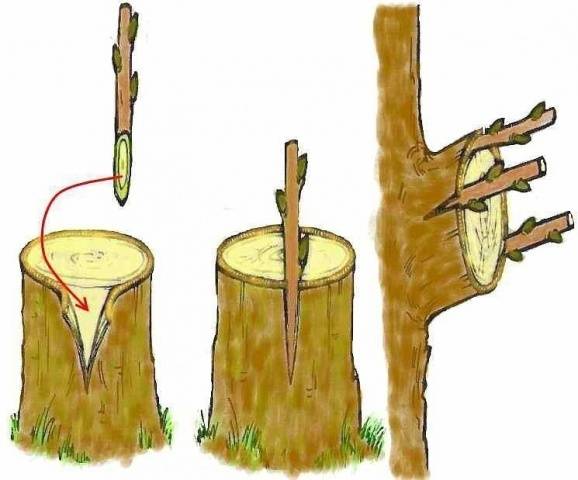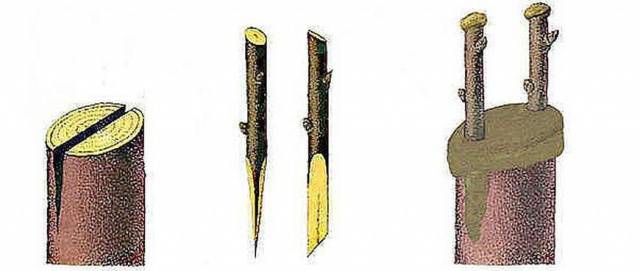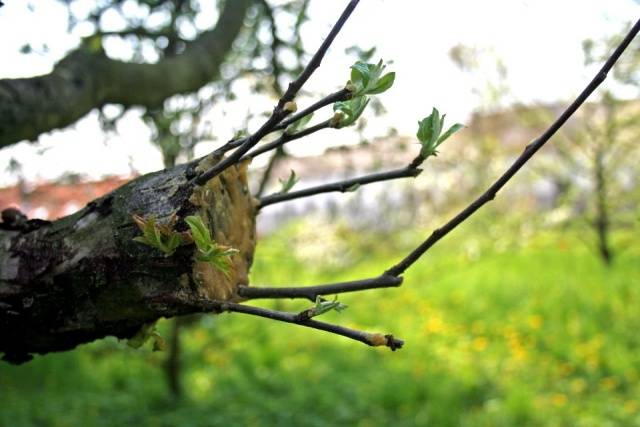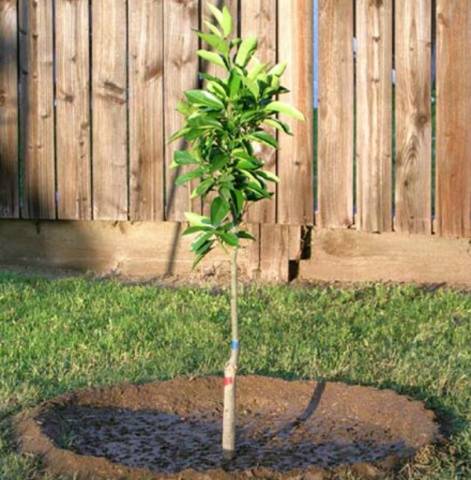Content
Grafting, by definition, is a propagation method for fruit trees and shrubs. Thanks to this simple event, you can significantly rejuvenate the plants, expand the range of fruit crops in your garden. But the most important thing is that grafting is a creative process that allows you to experiment endlessly even in small summer cottages.
Vaccination is straightforward for professionals. But for novice gardeners, vaccination apple trees spring can raise a lot of questions. But it is important to know that vaccination, although a simple event, still requires adherence to clearly established deadlines and recommendations.
Purposes and benefits of vaccination
Thanks to this simple process, more than 10,000 new varieties of apple trees have already been bred. To this day, both experienced breeders and simple amateur gardeners do not stop experimenting to create new subspecies.
Through grafting, breeders achieve the following goals:
- Breeding new varieties;
- Improvement of such characteristics as frost resistance, palatability of apples, increase in yield, adjustment of ripening times, acclimatization of the variety in a strictly defined region, height and size of the crown of trees;
- Increasing the resistance of apple trees to common diseases and pests;
- Simplification of growing and harvesting conditions.
And often professionals achieve their goals, and gardeners use the results of their work, growing high-yielding varieties of apple trees on their plots.
The benefits of vaccination are as follows:
- It is not always possible to buy seedlings of the variety you like. And thanks to grafting an apple tree in spring, you can significantly expand the range of fruit crops in your garden.
- Grafting is the only method thanks to which it is possible to regionalize apple varieties intended for cultivation in other climatic conditions;
- Low yield, unimportant taste of fruits, one-sided crown - these shortcomings can be corrected by grafting.
- Old, diseased trees can always be reanimated by grafting.
- Thanks to this simple procedure, you can combine up to five varieties of apple trees with different tastes and different ripening times on one tree, which helps to save space in a limited space.
- Vaccination is a limitless field of activity for those who like to experiment.
Planting an apple tree in spring is not as difficult as it seems at first glance. It is important to remember that many gardeners equate this process with a surgical operation. That is why you need to follow the recommended deadlines and tips for an excellent result.
The author of the video will answer the question of why it is worth learning to graft fruit crops:
When to vaccinate: in spring or autumn
In most cases, experienced gardeners graft apple trees in the spring. And this is due to the peculiarities of the development and growth of trees during this period. With the onset of the thaw, all nature awakens, buds swell, and active sap flow begins in the trunks and branches of trees.
Grafting an apple tree in spring is more justified for the reason that during the summer a weak seedling has enough time to grow stronger and gain strength, adapt to local climatic conditions, and subsequently calmly endure the winter cold.
Another advantage of spring grafting of apple trees is the ability to evaluate the results of your work as soon as possible. After all, literally after 2-3 weeks it will be clearly visible whether the scion has taken root. When grafting cuttings at other times of the year, you will have to wait several months.
The timing of grafting apple trees in the spring is ambiguous. The climatic conditions of each region are different. First of all, you need to focus on the condition of the kidneys. It is advisable to finish all gardening work before the buds open.
On average, active sap flow is gaining strength by mid-late April. In the southern regions, the optimal dates for grafting an apple tree come a little earlier - in late March - early April. And sometimes gardeners have only a few days in which they need to have time to prepare cuttings, stock, tools, and graft the apple tree in the spring.
Preparation of tools and materials
Before properly planting an apple tree in the spring, you need to take care of the tools and material in advance. After all, the time suitable for grafting is very limited. And in the springtime, all summer residents have a lot of work.
In order to carry out this procedure as quickly as possible and reduce the risk of possible failures, prepare the following tools and materials in advance:
- Pruner, garden knife, saw (if you are going to plant on old apple trees or thick branches). All instruments must be sharply honed. They must be treated with an alcohol solution immediately before inoculation.
- Insulating material for fixing. The material should be dense, waterproof. Electrical tape, or cut into strips of polyethylene and twine is ideal for this purpose.
- Garden pitch for processing cuts and alignments.
- A good scion and a suitable stock is also indispensable.
Before you vaccinate on an apple tree in the spring, be sure to wash and disinfect your hands.
Scion preparation
A graft is a stalk from an apple tree, the variety of which you would like to have on your site. For successful grafting, it is important to choose and cut the grafts correctly.
It is advisable to cut the cuttings just before planting the apple tree, that is, in the spring. The optimal amount of harvested material is very easy to calculate. How many cuttings you have time to plant within 3-4 hours, so much should be prepared.
You need to cut the material only from a healthy, fruiting apple tree. Sick, damaged branches are not suitable for grafting.
It is undesirable to use the so-called spinning tops - empty shoots as a scion. It is very easy to distinguish them from ordinary shoots - the buds on tops are small and are located less frequently than on branches that are guaranteed to yield a harvest.
On average, the length of apple cuttings should vary within 15 - 25 cm, and their thickness is 0.8 - 1.3 cm. When harvesting suitable material, please note that each shoot should have at least 3-5 healthy, well-developed buds.
One shoot can be divided into several cuttings, the main thing is that they have the required number of buds. Immediately after cutting, place the shoots in honey water. Dissolve honey in water in a ratio of 0.5 tsp. 0.5 cups of water. This will help preserve the cuttings and increase the chances of survival.
It is very good when the apple tree with which you want to cut the cuttings is near.But what if the original tree is far away, or there is no way to cut and immediately graft the shoot? In this case, you can store the shoots in a plastic bag in the refrigerator or basement, at a temperature from - 1˚C to + 5˚C.
The author of the video will tell you how to prepare cuttings for the subsequent spring grafting of apple trees:
Stock preparation
The stock is a seedling, stump or tree, to which the prepared cutting is grafted. A suitable stock must be taken care of in advance.
The terms for carrying out spring work are very short, therefore, the basis for future fruit crops is selected in advance, in summer or autumn, and in the spring they only carry out grafting.
The ideal stock for an apple tree is young, 2 or 3 year old seedlings. You can also use a wild game as a rootstock - a young growth of apple trees growing in the wild. These seedlings are grown in local climatic conditions, and are highly resistant to diseases and pests.
You can grow your own stock. Plant apple seeds and in a couple of years you will have many seedlings suitable for grafting.
Long-term practice has shown that old trees can also be used as rootstock. It is important to remember that only healthy trees without signs of disease and traces of rotting are suitable for grafting apple trees in the spring. It is also undesirable to plant on an apple tree that is damaged by insects.
In the absence of a suitable stock, apple trees can be grafted onto third-party crops - pear, quince, viburnum, mountain ash or hawthorn. But in this case, there are frequent cases of poor survival of the scion, as well as a gradual decrease in yield, the fruits become small over time and lose their taste.
In order to be 100% sure of the result and consistently receive a good harvest of apples in the future, it is worth giving preference to apple rootstocks.
Which way to choose
At the moment, there are many ways of grafting an apple tree in the spring. However, most of them are difficult to execute or require experience. Therefore, at the moment there are three methods that are so simple to perform that a novice gardener can also cope with them:
- Copulation;
- Bark grafting;
- Cleft inoculation.
The most common and easiest way to graft an apple tree in the spring is copulation. This method is used to inoculate shoots if the scion and rootstock are approximately the same in thickness. If the diameter of the seedling and the cutting is very different, then it is better to graft "by the bark" or "into the split".
You need to plant apple trees in spring in cloudy, but not rainy weather. If spring pampers with warm days, then postpone the vaccination for the morning or evening.
And do not forget that in no case should you touch open cuts with your hands. All actions must be quick and clear.
Whichever method you prefer, it's time to learn how to vaccinate an apple tree in the spring. A video for novice gardeners will help you get acquainted with several methods of vaccination, master the lessons, and apply them in practice.
Copulation
Copulation is deservedly considered the most versatile grafting method, because it is so simple that it allows gardeners to plant apple trees not only in spring, but also in summer, and even in autumn.
The whole point of this method of grafting apple trees is that identical cuts must be made on young shoots of the scion and rootstock, which are then combined into one branch and fixed. The more tightly both parts are connected, the higher the likelihood that the shoot will take root.
It is customary to graft an apple tree in the spring by copulation if both the scion and the rootstock are approximately the same in diameter. The maximum thickness of the shoots is 2-2.5 cm.Mostly by copulation, apple trees are grafted in the spring on seedlings at the age of 1-2 years, or on young wild game.
There are two types of copulation - simple and improved (for the tongue). The technique of execution in both cases is the same, only the cut is different. With improved copulation on both cuttings - rootstock and scion - you need to make a zigzag cut or a shallow split in order to connect the cuttings as tightly as possible.
A step-by-step description of grafting an apple tree in the spring by copulating:
- On the rootstock and on the scion, you need to make even, oblique cuts 3-4 cm long. You need to cut the cuttings in one motion "towards yourself" so that the cut is perfectly even.
- Both shoots must be connected together, pressing against each other as tightly as possible.
- Wrap the junction tightly with insulating tape or foil, and fix well.
- Open wounds that did not fall under the electrical tape should be immediately treated with garden varnish.
The results of the apple tree grafting will be noticeable in 1.5-2 weeks. If the "operation" is successful, the buds will soon swell, and the first green leaves will appear on the shoots.
Grafting secateurs are gaining increasing popularity among experienced summer residents. Sharply sharpened knives and several interchangeable attachments allow you to make perfect cuts. The process of spring grafting of apple trees is simplified several times thanks to the grafting pruners.
The author of the video will tell and show you step by step how to plant an apple tree in the spring by copulating "by the tongue":
"For the bark"
Grafting "by the bark" can rejuvenate old apple trees or even out the crown of one-sided trees. You can plant an apple tree in the spring both to a small hemp and to a skeletal branch. Also, using this method, you can combine several different varieties of apple trees on one tree.
When vaccinating, it is important that three conditions are met:
- The free length of the stock should be at least 40-60 cm.
- The bark should peel off easily.
- The scion must be free of signs of disease or damage.
In order to properly plant an apple tree, novice gardeners need to follow the following algorithm of actions step by step:
- Skeletal branches or stump cut down at a distance of 40-60 cm from the trunk (ground).
- The saw cut must be carefully cleaned with a garden knife until it is perfectly even.
- Now it is important to make the correct cuts in the bark. If you are grafting an apple tree in the spring on a skeletal branch, then you need to cut the bark in the upper part, otherwise the branch will subsequently break off under the weight of its weight or fruits. The length of the cut is no more than 4-6 cm. Please note that you only need to cut the bark without touching the wood.
- Pry the bark and move it to the sides at a distance of 3-4 mm from the trunk. It is better to do this with the blunt side of the knife so as not to injure the stock.
- Make a straight, oblique cut on the scion. Cut length - at least 3 cm.
- Now you need to carefully insert the scion behind the bark, pressing the open cut against the trunk. 2-3 mm of the cut on the scion should "look out" over the cut.
- Fix the grafting site well with insulating material and treat the open areas with garden varnish.
This method of grafting apple trees in spring is very easy to perform and does not require any special skills or experience. The most important thing is to follow the recommendations of specialists. And young apple trees will soon thank you with a generous harvest of aromatic and tasty apples.
An illustrative lesson on how to plant an apple tree in spring using the "bark" method will be given to you by the author of the video
"Into the split"
The grafting of apple trees in the spring by the "splitting" method is carried out if the rootstock and the scion differ significantly in thickness. Often this method is used in cases where you need to update, level, or increase the crown of trees, as well as for growing several varieties of apples on one apple tree.
As a rootstock, apple tree trunks or branches are ideal, the diameter of which varies from 2 cm to 12 cm. The timing of grafting an apple tree in the spring using the “splitting” method is more loyal: you can start gardening from the moment the sap flow in the trunks begins, that is, at the end of March - mid-April. And until the end of May, you have plenty of time to finish grafting without haste.
In order to properly graft the apple tree into the cleft, you should follow a series of simple steps:
- Cut the stem or skeletal branch of the apple tree and clean it carefully with a knife. The saw cut should be perfectly flat, without chips or roughness.
- Using a screwdriver or a knife treated with alcohol, carefully split the stock lengthwise. Do not make a gap too deep. Insert a screwdriver into the crevice for convenience.
- At the lower end of the scion, you need to make oblique cuts on both sides, the length of which is 3.5-4 cm. As a result, you should get a wedge.
- Insert the scion into the split on the branch so that the slices disappear into the crevice.
- Remove the screwdriver and wrap the branch with electrical tape.
- Treat all open wounds with garden varnish.
The author of the video will tell you how to plant an apple tree in a split in spring:
Follow-up care of fruit trees
Apple trees grafted in the spring, regardless of age and method of grafting, need attention and care. Grafted seedlings should be inspected weekly.
The fact that the grafting of the apple tree in the spring was successful, and the grafts took root, will tell you the state of the kidneys. After 1.5-2 weeks, they should swell. And soon the first leaves will appear on the shoots.
If, after 3-4 weeks, the kidneys remained in the same state, did not swell, but, on the contrary, dried out, then the "operation" ended in failure. In this case, do not despair. Vaccination sites must be freed from the insulating material, the scions must be removed, and the open places must be covered with garden varnish.
To ensure good results, experienced gardeners, while grafting an apple tree in the spring, plant not one or two, but several seedlings. If all the shoots are accepted, the weakest are removed, leaving only the powerful ones.
If all the grafts have taken root, it is undesirable to remove the bandages until next spring. After a year, with the arrival of the thaw, the insulating material must be gradually loosened. In springtime, young twigs grow not only in height, but also increase in diameter.
For good growth and ensuring the supply of nutrients in sufficient quantity, it is necessary to timely remove numerous shoots and shoots growing below the graft.
Do not forget about the standard measures for the care of seedlings - watering, feeding, loosening, mulching.
Conclusion
It will take several years to grow a young, fruitful tree. Each summer resident wants to have several varieties of apple trees with different ripening periods on one site. The cost of seedlings only grows every year. Grafting apple trees in spring is a great opportunity to save money and collect only the best varieties in your garden. It will take only 3-4 years, and you will be able to enjoy the fruits of your labor in the literal sense.
